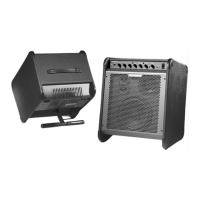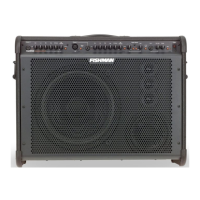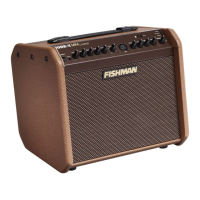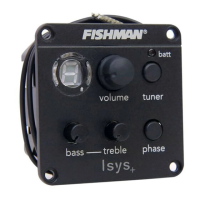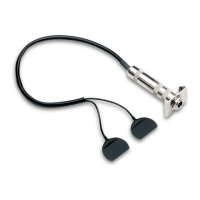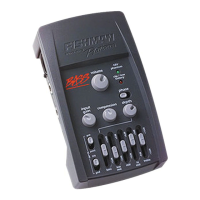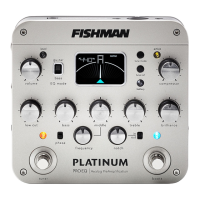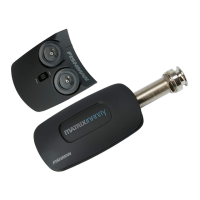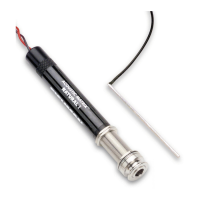Do you have a question about the Fishman LOUDBOX ARTIST and is the answer not in the manual?
Instructions for saving the amplifier's packing materials for future shipping needs.
Information about high sound pressure levels and potential hearing loss.
Covers Channel 1 input, XLR input, and the 10dB Pad/Clip LED function.
Adjusting signal gain and using Low, Mid, High controls for tone.
Utilizing Anti-Feedback and Phase controls to manage acoustic feedback.
Controlling effect levels, selection, time, and depth for effects A and B.
Adjusting Aux Level, Master Volume, using the headphone jack, and channel mute.
Adjusting tweeter output and providing phantom power for microphones.
Details on power switch, AC input, foot switch, and aux input.
Using the post-EQ D.I. output for external audio routing.
Connecting external effects processors using send/return jacks.
Using pre-EQ D.I. outputs for sending clean signals to mixing consoles.
Guidance on setting tone controls at low, medium, and high volume levels.
Specifications for input impedance, phantom power, and tone control ranges.
Details on D.I. outputs, effects sends, and returns.
Specifications for speaker components, rated power, and frequency response.
Information on power consumption, fuse rating, dimensions, and weight.
Instructions for saving the amplifier's packing materials for future shipping needs.
Information about high sound pressure levels and potential hearing loss.
Covers Channel 1 input, XLR input, and the 10dB Pad/Clip LED function.
Adjusting signal gain and using Low, Mid, High controls for tone.
Utilizing Anti-Feedback and Phase controls to manage acoustic feedback.
Controlling effect levels, selection, time, and depth for effects A and B.
Adjusting Aux Level, Master Volume, using the headphone jack, and channel mute.
Adjusting tweeter output and providing phantom power for microphones.
Details on power switch, AC input, foot switch, and aux input.
Using the post-EQ D.I. output for external audio routing.
Connecting external effects processors using send/return jacks.
Using pre-EQ D.I. outputs for sending clean signals to mixing consoles.
Guidance on setting tone controls at low, medium, and high volume levels.
Specifications for input impedance, phantom power, and tone control ranges.
Details on D.I. outputs, effects sends, and returns.
Specifications for speaker components, rated power, and frequency response.
Information on power consumption, fuse rating, dimensions, and weight.
| Power Output | 120 watts |
|---|---|
| Speaker Size | 8-inch |
| Channels | 2 |
| Effects | Reverb, Chorus, Flanger, Delay, Echo, Slap Echo |
| Feedback Control | Yes |
| Phantom Power | Yes |
| Outputs | 1 XLR, 1 1/4-inch |
| EQ | 3-band EQ |
